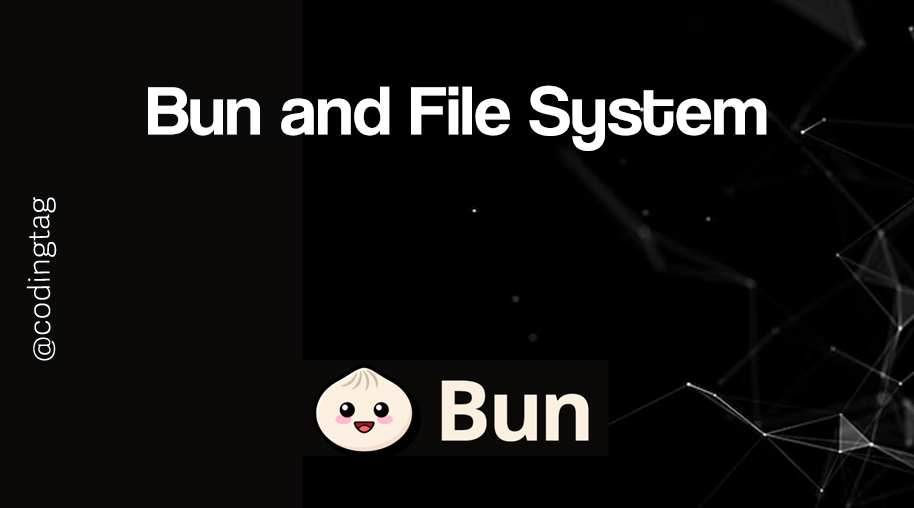Bun + GraphQL API
0 693
🧬 Introduction to Bun + GraphQL API
GraphQL has become the go-to choice for building flexible and efficient APIs, and Bun is rapidly emerging as the fastest JavaScript runtime in the modern dev stack. Combining both gives you a lightning-fast backend with query precision.⚡️💡
In this tutorial, we’ll walk through setting up a GraphQL API using Bun, from schema to server, and show how to make it blazing-fast and production-ready.
📚 Why Use GraphQL with Bun?
Traditional REST APIs can be rigid — you're either under-fetching or over-fetching. GraphQL lets clients ask for exactly what they need.
Now mix that with Bun’s speed and low resource usage, and you’ve got:
- 🚀 Super-fast API responses
- 🧠 Flexible data querying
- 💾 Lower server footprint
- 🔧 Easy integration with modern tools
🔧 Setting Up Bun for GraphQL
Let’s start by creating a new Bun project and installing GraphQL dependencies.
bun init graphql-api
cd graphql-api
bun add graphql
You can also use libraries like graphql-yoga or apollo-server if you need advanced tooling, but here we’ll keep it simple and use the raw graphql module for clarity.
📐 Creating a GraphQL Schema
First, define a schema using the GraphQL schema language:
import { buildSchema } from "graphql";
const schema = buildSchema(`
type Query {
hello: String
user(id: ID!): User
}
type User {
id: ID
name: String
email: String
}
`);
🧠 Defining Resolvers
Resolvers provide the actual logic for fetching data. Here’s how to implement a simple one:
const fakeUsers = [
{ id: "1", name: "Alice", email: "alice@example.com" },
{ id: "2", name: "Bob", email: "bob@example.com" }
];
const root = {
hello: () => "Hello from Bun + GraphQL 👋",
user: ({ id }) => fakeUsers.find(user => user.id === id)
};
🚀 Setting Up the Server with Bun
Bun’s fetch-based server makes it easy to run a GraphQL endpoint:
import { graphql } from "graphql";
Bun.serve({
port: 3000,
fetch: async (req) => {
if (req.method === "POST") {
const { query, variables } = await req.json();
const result = await graphql({
schema,
source: query,
rootValue: root,
variableValues: variables
});
return new Response(JSON.stringify(result), {
headers: { "Content-Type": "application/json" }
});
}
return new Response("GraphQL API is running 🚀");
}
});
🧪 Testing Your GraphQL Endpoint
Use curl, Postman, or GraphQL Playground to run queries like:
{
hello
}
Or fetch a specific user:
{
user(id: "1") {
name
email
}
}
If everything’s working, your Bun-powered GraphQL API will respond almost instantly ⚡.
🔐 Handling Errors Gracefully
GraphQL makes error handling structured by default. But you can customize your logic too:
const root = {
user: ({ id }) => {
const found = fakeUsers.find(user => user.id === id);
if (!found) throw new Error("User not found");
return found;
}
};
This will return errors in the response payload while maintaining HTTP 200 OK.
🎁 Bonus: Adding Mutations
Let’s add a mutation to create a new user:
const schema = buildSchema(`
type Query {
hello: String
user(id: ID!): User
}
type Mutation {
createUser(name: String!, email: String!): User
}
type User {
id: ID
name: String
email: String
}
`);
let users = [...fakeUsers];
const root = {
createUser: ({ name, email }) => {
const newUser = {
id: String(users.length + 1),
name,
email
};
users.push(newUser);
return newUser;
}
};
Now you can send POST requests with GraphQL mutation queries to add data. ✅
📦 Production Tips
- 🔒 Add authentication middleware for protected queries
- 📉 Use caching strategies for heavy queries
- 📈 Monitor with logging and metrics
- 📂 Break schema and resolvers into modules as the app scales
🏁 Final Thoughts
Combining Bun + GraphQL gives you the best of both worlds: the speed and simplicity of Bun with the flexibility of GraphQL.
Whether you're building microservices, mobile backends, or SaaS platforms — this combo is lean, modern, and future-ready 🚀💪.
If you’re passionate about building a successful blogging website, check out this helpful guide at Coding Tag – How to Start a Successful Blog. It offers practical steps and expert tips to kickstart your blogging journey!
For dedicated UPSC exam preparation, we highly recommend visiting www.iasmania.com. It offers well-structured resources, current affairs, and subject-wise notes tailored specifically for aspirants. Start your journey today!

Share:







Comments
Waiting for your comments